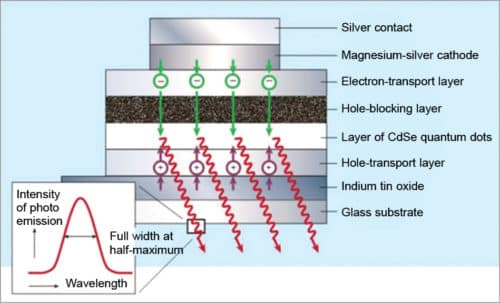3D printers are penetrating into the market, enabling rapid prototyping of realistic 3D models. Ever wondered how these printers are designed? In an era of unified communications, where everything is smart and connected, the prevalent output technologies are no less than a communion of traditional design and modern components. The coming together of these two results in disruptive innovations and solutions.
Take, for instance, digital speakers. Their sound output is much better than of traditionally used amplifying systems. How are devices becoming more powerful in functionality while reducing in volume? The answer is simple: The design to build them is transforming.
Here’s a look at how video, audio, print and tactile designs for output technologies are being upgraded in the smart world.
Video/display
Next-generation display technologies include organic light-emitting diode (OLED), surface-conduction electron-emission display (SED), field-emission display (FED) and quantum-dot display (QD LED). Companies like Sony, Panasonic, Samsung and LG are using OLED in their TV sets, smartphones and other devices. Canon and Toshiba are implementing SED, while Motorola is working on FED.

QD LED has found wide acceptance as it is reliable and energy-efficient. It can be fabricated using either of two techniques: phase separation or contact printing.
BenQ is using QD LED displays in its latest range of products. “The world is moving towards product specialisation. BenQ’s 69cm (27-inch) QHD (2560×1440) IPS LED display delivers 100 per cent sRGB colour accuracy and wide viewing angle performance,” shares Rajeev Singh, BenQ India managing director.
BenQ also has a range of high-tech dustproof projectors for schools. These projectors are equipped with Dust Guard technology, enabling them to last longer and reduce downtime while still delivering good image quality and performance. Dustproof line products come equipped with sealed engines, anti-dust accumulation sensor, Hall sensors, and dust filters to prolong service and ultimately save schools the trouble of cleaning, repairing and replacing dust-damaged AV equipment.”

Singh explained, “Sealed engines offer complete protection for colour wheels, DLP chips and light path components, virtually eliminating the possibility of colour-wheel-sensor failure, visible spotting on images and colour decay. Dust filters block particulate matter as small as 2.5 micrometres (PM2.5) and 90 per cent of all airborne dust particles. Hall sensors make projectors invulnerable to dust accumulation. The BenQ Anti-Dust Accumulation Sensor prevents dust accumulation, significantly prolonging the life of the device.”
OLED displays are the latest fad among smartphones. G. Rajeswaran, director of OLED display manufacturing company Grantwood, shared, “The major reason for OLED display adoption is the fact that, unlike an LCD, it shows deep black levels and is thinner and lighter. Also, an OLED screen can achieve higher colour contrast ratio than an LCD.”
LCDs continue to rule a segment of display range for industrial products. Jason Tsai, marketing manager at KOE (a Taiwan-based industrial LCD manufacturing company), said, “To keep up with the needs of new devices, KOE’s Rugged+ displays have been specifically developed to have robust mechanical, electrical and environmental characteristics that are highly resistant to shock, vibration, electro-static discharge and temperature variation. The new high-resolution 26cm (10.3-inch) displays implement in-plane switching display technology, which provides exceptional optical performance with highly consistent colour reproduction and wide viewing angles.”

Audio
Today, speakers are not just portable but also come with innovative amplifiers to cover up for the lost experience that the bigger systems used to provide.
Siddharth Aryan, founder, Sound by Design, explained, “The new-generation speakers, whether independent or built into laptops, now come with smart amplifiers. These devices are a combination of system-on-a-chip and digital signal processing technology powered by new driver topologies. Such upgradation in technology has improved both the quality and volume of sound output.”

Smart amplifiers consist of digital signal processing blocks, which help to modify the frequency curve according to the set output volume. Smart sensors gain information about voltage and temperature.
Aryan feels, “This is just the beginning, we’ll see more and more improvements in products with components helping to give more output at less power and minimal loss.”
Tactile
Devices with tactile or haptic technology aim to address somatic senses of users with their output. The vibrations that we feel on our smartphones are what tactile output is all about. Tactile output is especially useful for graphical and robotic applications.
Krispian Lawrence, founder, Ducere Technologies, explained, “Haptic technologies take data from a source and use tactile (touch-based) sensors to respond to it in the form of vibrations or touch-based sensations for the user. Haptic sensors are in-built in the product design, and cause the desired output to the user when the device receives signals through Bluetooth, Wi-Fi or any other connecting technology.”

Haptic output can be provided through pneumatic stimulation (using air-jets and air-pockets), vibrotactile stimulation (using blunt pins and piezoelectric crystals), and electrotactile stimulation (using small electrodes).







